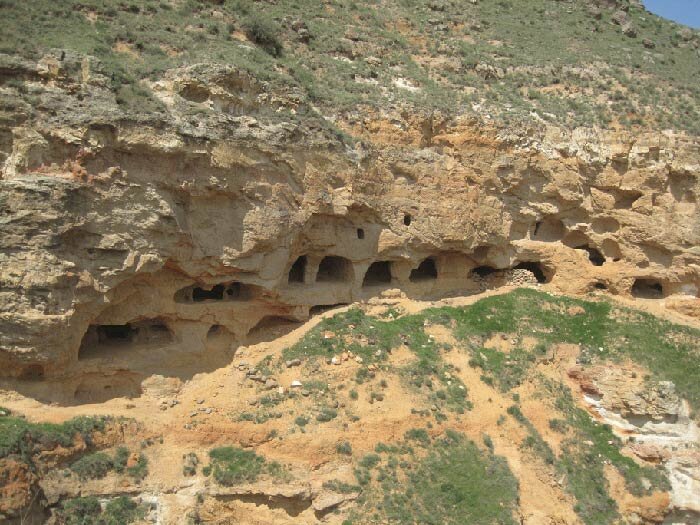Prehistorical troglodyte homes to become tourist destination

TEHRAN – A series of prehistorical troglodyte homes and their rock-carved surroundings situated in northwest Iran will be prepared for sightseers.
“The troglodyte caves of Binalar, which are located in Meshkinshar county (of Ardebil province), will be [temporary] handed over to the private sector to be prepared for tourist visits,” provincial tourism chief Nader Fallahi said on Monday.
“Those troglodyte caves were once settlements of early humans… and they embrace two-story and three-story dwellings parts of which have been destroyed over time… and some of those caves are interconnected,” the official explained.
“The participation of the private sector is an important step toward bringing prosperity to Binalar caves to attract tourists to the area,” Fallahi stated.
So far, tens of thousands of ancient petroglyphs and rack-carved arts have been discovered in Meshginshahr county, some of which depict mountain goats, boat anchors, shooting and scenes of war, and scenes of deer hunting in individual and collective forms.
The rock art can be seen in some mountainous regions across Iran where roaming life and livestock farming are prevalent typically. The rock-carved figures of animals, associated tools are regarded as good clues to help shed light on daily life in the distant past, though some figures might be symbolic.
Iran is a haven for ancient troglodytic architecture which is somewhat forgotten though they are filled with life and creativity. The northwest Kandovan village is one of the most famous examples of troglodytic architecture in the country; its ice-cream cone-shaped homes are resembling that of Turkey’s Cappadocia.
In 2018, the country hosted the 3rd International Troglodytic Architecture Conference in which tens of experts, researchers, and academia discussed troglodyte-associated architecture, culture, and technology.
AFM

Leave a Comment